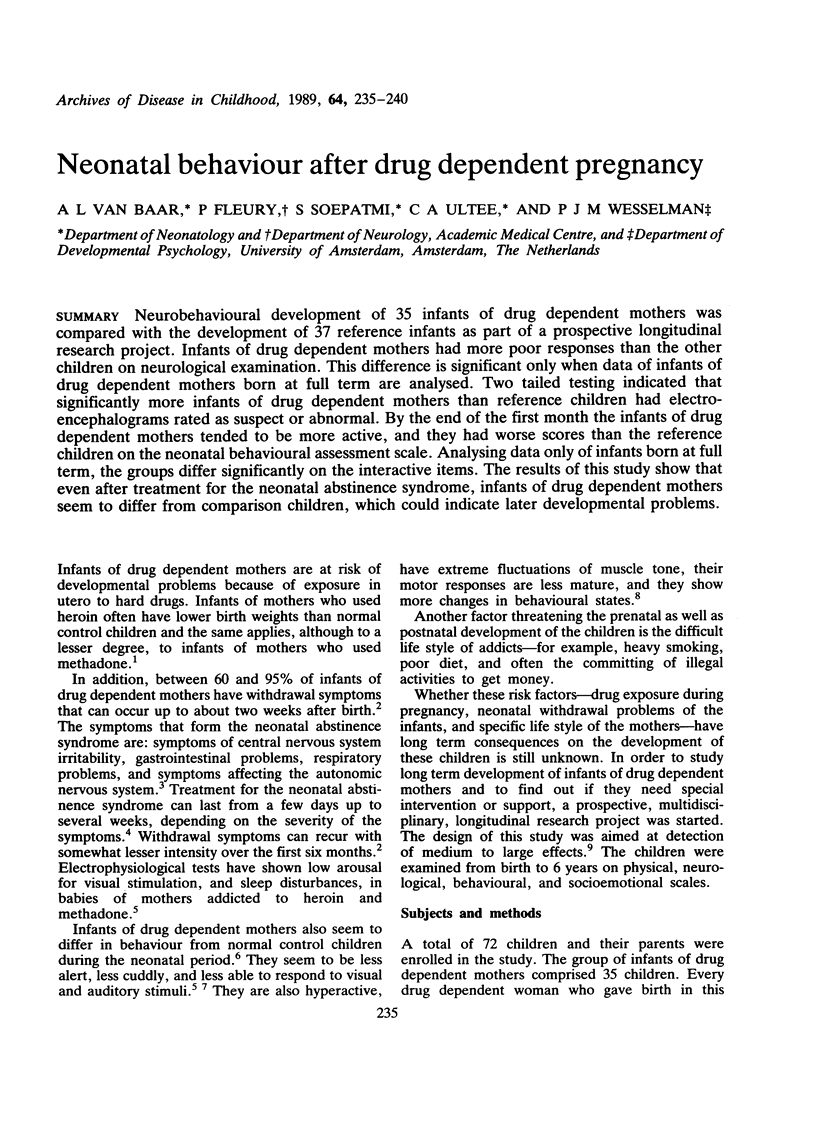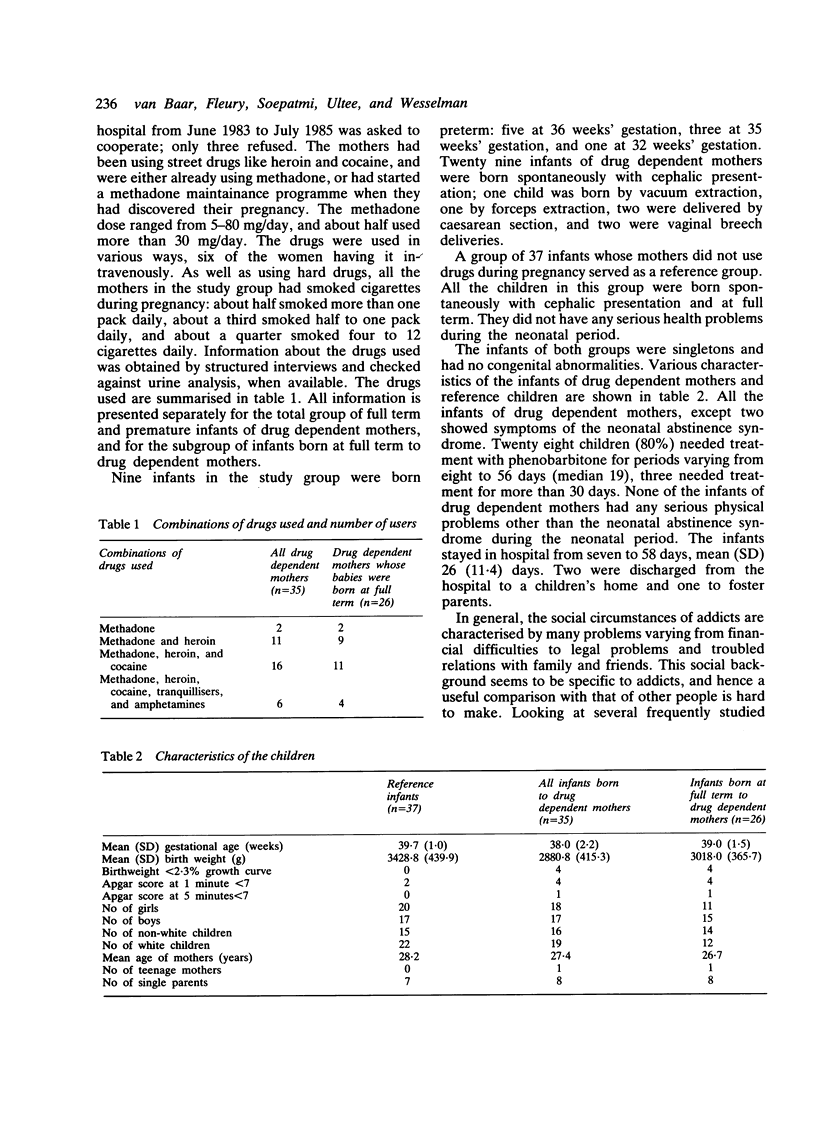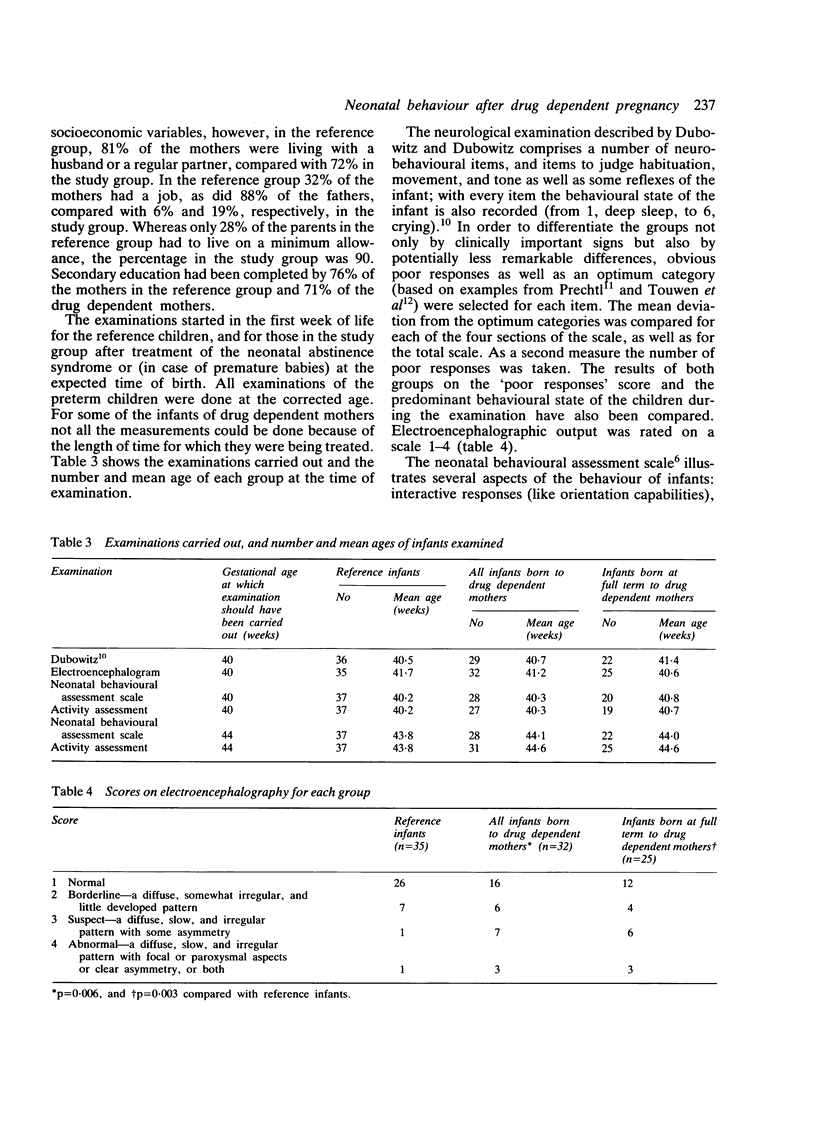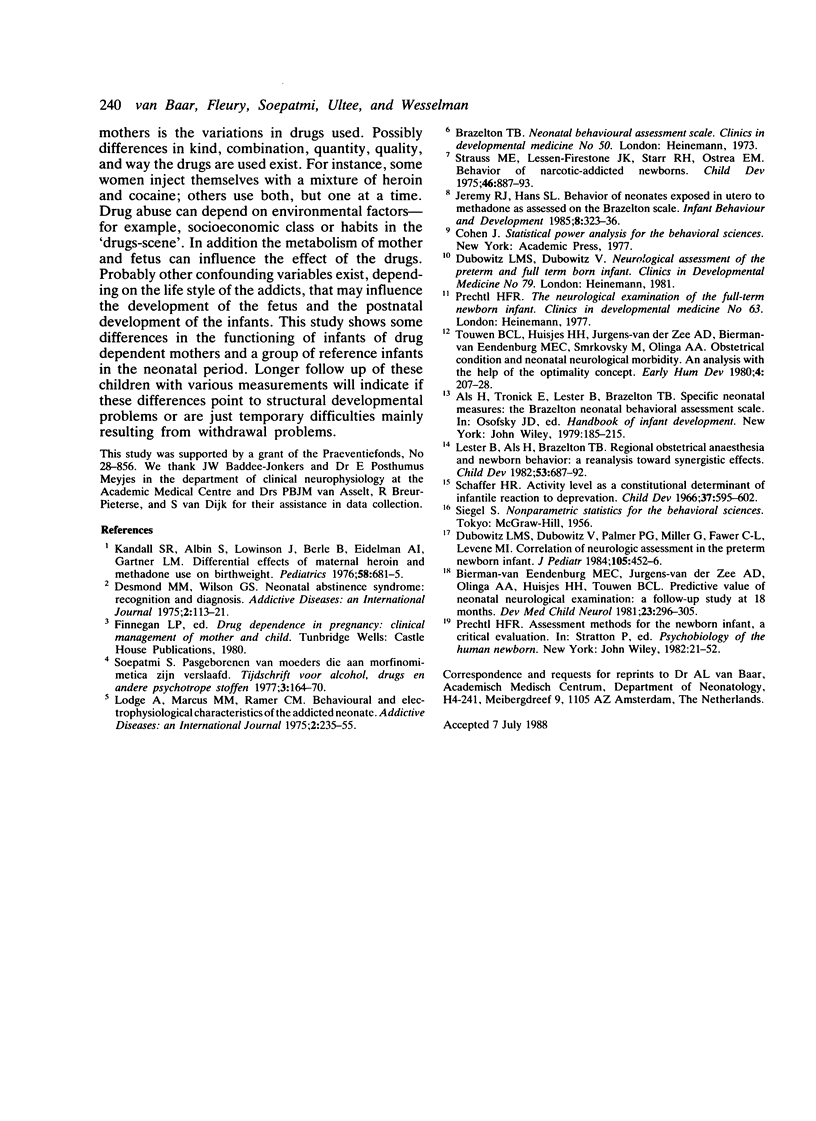Abstract
Neurobehavioural development of 35 infants of drug dependent mothers was compared with the development of 37 reference infants as part of a prospective longitudinal research project. Infants of drug dependent mothers had more poor responses than the other children on neurological examination. This difference is significant only when data of infants of drug dependent mothers born at full term are analysed. Two tailed testing indicated that significantly more infants of drug dependent mothers than reference children had electro-encephalograms rated as suspect or abnormal. By the end of the first month the infants of drug dependent mothers tended to be more active, and they had worse scores than the reference children on the neonatal behavioural assessment scale. Analysing data only of infants born at full term, the groups differ significantly on the interactive items. The results of this study show that even after treatment for the neonatal abstinence syndrome, infants of drug dependent mothers seem to differ from comparison children, which could indicate later developmental problems.
Full text
PDF





Selected References
These references are in PubMed. This may not be the complete list of references from this article.
- Bierman-van Eendenburg M. E., Jurgens-van der Zee A. D., Olinga A. A., Huisjes H. H., Touwen B. C. Predictive value of neonatal neurological examination: a follow-up study at 18 months. Dev Med Child Neurol. 1981 Jun;23(3):296–305. [PubMed] [Google Scholar]
- Desmond M. M., Wilson G. S. Neonatal abstinence syndrome: Recognition and diagnosis. Addict Dis. 1975;2(1-2):113–121. [PubMed] [Google Scholar]
- Dubowitz L. M., Dubowitz V., Palmer P. G., Miller G., Fawer C. L., Levene M. I. Correlation of neurologic assessment in the preterm newborn infant with outcome at 1 year. J Pediatr. 1984 Sep;105(3):452–456. doi: 10.1016/s0022-3476(84)80028-1. [DOI] [PubMed] [Google Scholar]
- Kandall S. R., Albin S., Lowinson J., Berle B., Eidelman A. I., Gartner L. M. Differential effects of maternal heroin and methadone use on birthweight. Pediatrics. 1976 Nov;58(5):681–685. [PubMed] [Google Scholar]
- Lester B. M., Als H., Brazelton T. B. Regional obstetric anesthesia and newborn behavior: a reanalysis toward synergistic effects. Child Dev. 1982 Jun;53(3):687–692. [PubMed] [Google Scholar]
- Lodge A., Marcus M. M., Ramer C. M. Part II. Behavioral and electrophysiological characteristics of the addicted neonate. Addict Dis. 1975;2(1-2):235–255. [PubMed] [Google Scholar]
- Schaffer H. R. Activity level as a constitutional determinant of infantile reaction to deprivation. Child Dev. 1966 Sep;37(3):595–602. [PubMed] [Google Scholar]
- Strauss M. E., Lessen-Firestone J. K., Starr R. H., Jr, Ostrea E. M., Jr Behavior of narcotics-addicted newborns. Child Dev. 1975 Dec;46(4):887–893. [PubMed] [Google Scholar]
- Touwen B. C., Huisjes H. J., Jurgens-van der Zee A. D., Bierman-van Eendenburg M. E., Smrkovsky M., Olinga A. A. Obstetrical condition and neonatal neurological morbidity. An analysis with the help of the optimality concept. Early Hum Dev. 1980 Sep;4(3):207–228. doi: 10.1016/0378-3782(80)90027-4. [DOI] [PubMed] [Google Scholar]


